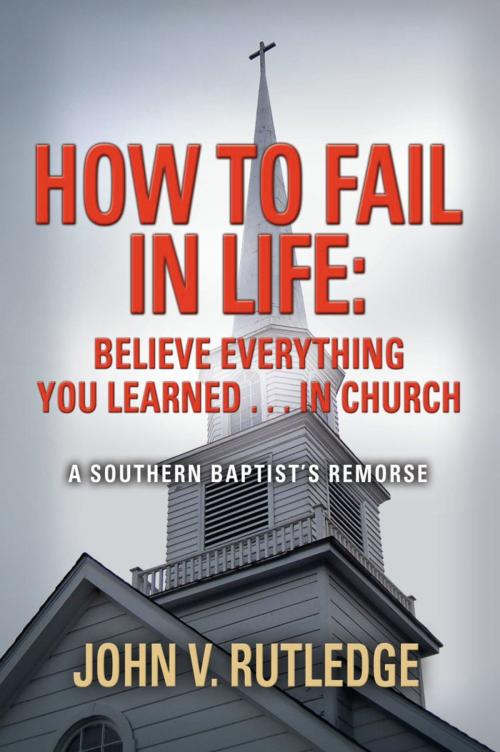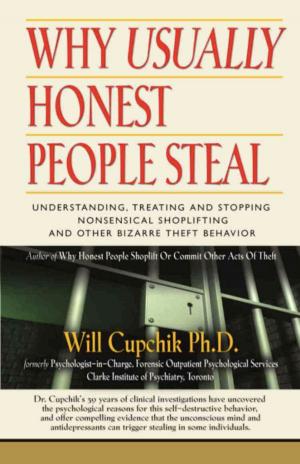How to Fail in Life: Believe Everything You Learned...in Church
Nonfiction, Reference & Language, Education & Teaching, Religion & Spirituality, Philosophy| Author: | John V. Rutledge | ISBN: | 9781634902663 |
| Publisher: | BookLocker.com, Inc. | Publication: | March 1, 2015 |
| Imprint: | Language: | English |
| Author: | John V. Rutledge |
| ISBN: | 9781634902663 |
| Publisher: | BookLocker.com, Inc. |
| Publication: | March 1, 2015 |
| Imprint: | |
| Language: | English |
Naive, gullible religious belief has a long and unchallenged history in America. To question biblical literalism, ministerial authority, or God’s hands-on management were unthinkable. The church theme was believe! The Bible says it, we believe it, and that settles it.
So conditioned, members were unable to detach themselves from belief and question the legitimacy of other “authorities”: advertisers, scam artists, politicians; indeed, claimants to superior knowledge in any field. Americans, though without any other unifying characteristic, became united in this one: uncritical belief.
How to Fail in Life disputes the claims that Old Testament tales should be - or were meant to be - taken literally. It shows that those who resist the symbolism deprive themselves of deeper meanings, and in their insistence on religious literalism, diminish their ability to critically analyze secular matters.
In support of its contentions, the book shows how church members arrived at their present incapacity for investigation, and it exposes eight church schemes designed to keep them from wandering—literally or figuratively—from the fold. It shows that churches, in our past and still today:
+ Abhor critical analysis.
+ Reject reason, logic, and common sense.
+ Scorn human capacity; foster self-doubt.
+ Disallow personal initiative; disparage secular success.
+ Promote an imbalanced, church-centered life.
+ Motivate with fear.
+ Project an arrogant, our-way-and-no-other-way provincialism.
+ Complicate Christianity
These religious blinders narrow the views of believers, who carry that limited perspective into the rest of life, where they find that it is at odds with all that secular success requires.
The final chapter, Redemption!, sets forth a simple progression by which a believer can escape church chains and return to the freedom of Christ’s simple command: “Follow me.”
Naive, gullible religious belief has a long and unchallenged history in America. To question biblical literalism, ministerial authority, or God’s hands-on management were unthinkable. The church theme was believe! The Bible says it, we believe it, and that settles it.
So conditioned, members were unable to detach themselves from belief and question the legitimacy of other “authorities”: advertisers, scam artists, politicians; indeed, claimants to superior knowledge in any field. Americans, though without any other unifying characteristic, became united in this one: uncritical belief.
How to Fail in Life disputes the claims that Old Testament tales should be - or were meant to be - taken literally. It shows that those who resist the symbolism deprive themselves of deeper meanings, and in their insistence on religious literalism, diminish their ability to critically analyze secular matters.
In support of its contentions, the book shows how church members arrived at their present incapacity for investigation, and it exposes eight church schemes designed to keep them from wandering—literally or figuratively—from the fold. It shows that churches, in our past and still today:
+ Abhor critical analysis.
+ Reject reason, logic, and common sense.
+ Scorn human capacity; foster self-doubt.
+ Disallow personal initiative; disparage secular success.
+ Promote an imbalanced, church-centered life.
+ Motivate with fear.
+ Project an arrogant, our-way-and-no-other-way provincialism.
+ Complicate Christianity
These religious blinders narrow the views of believers, who carry that limited perspective into the rest of life, where they find that it is at odds with all that secular success requires.
The final chapter, Redemption!, sets forth a simple progression by which a believer can escape church chains and return to the freedom of Christ’s simple command: “Follow me.”















